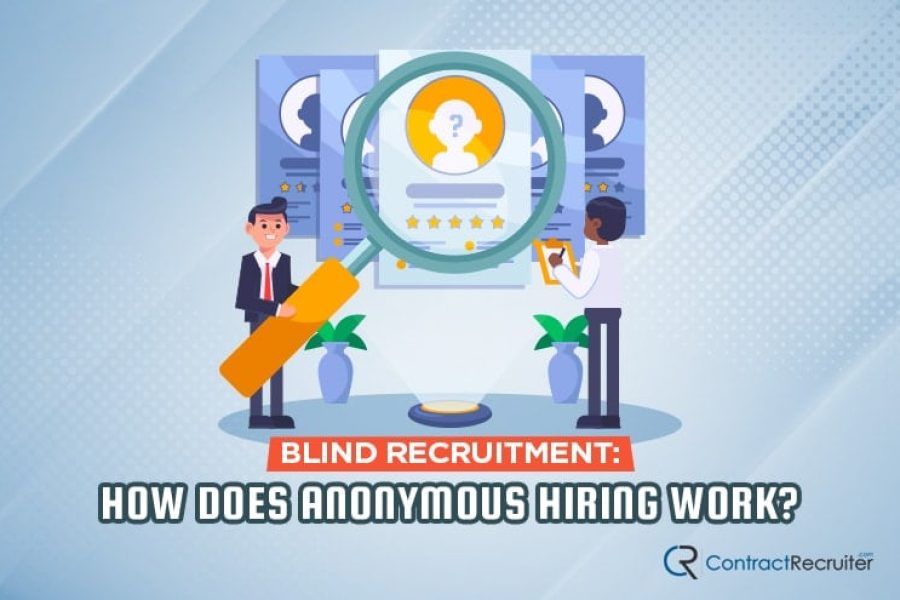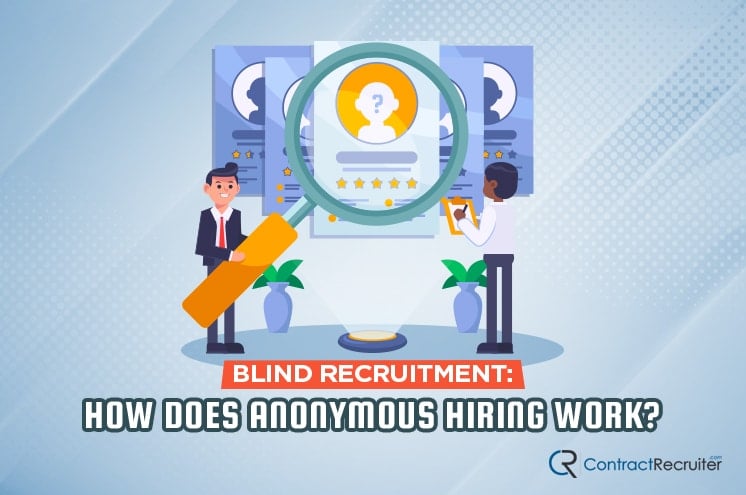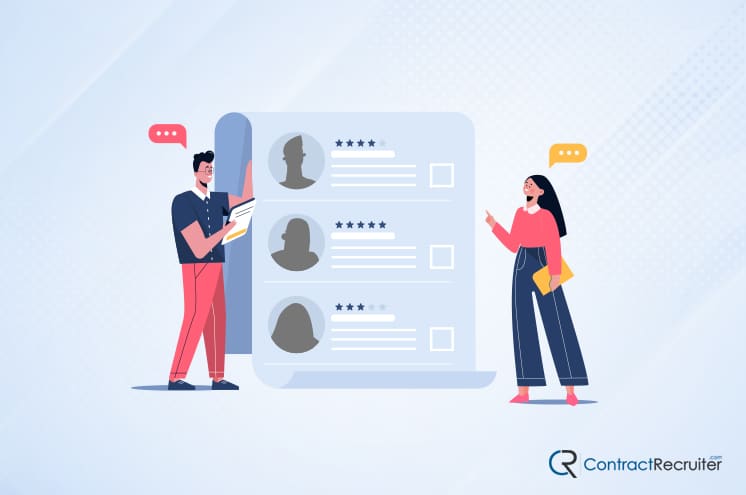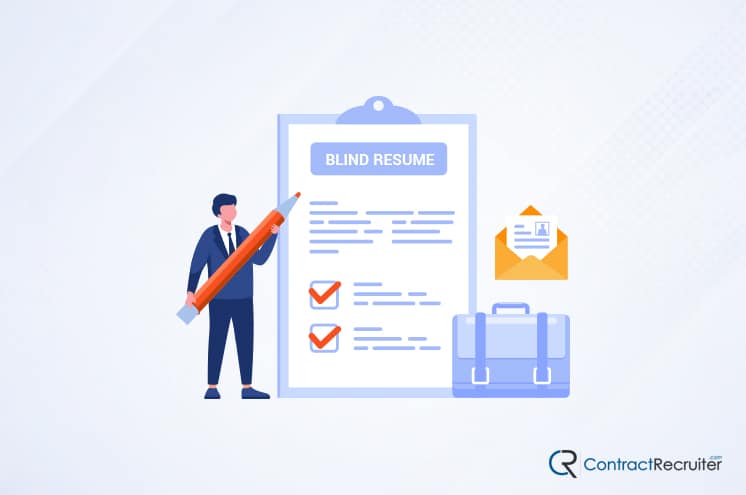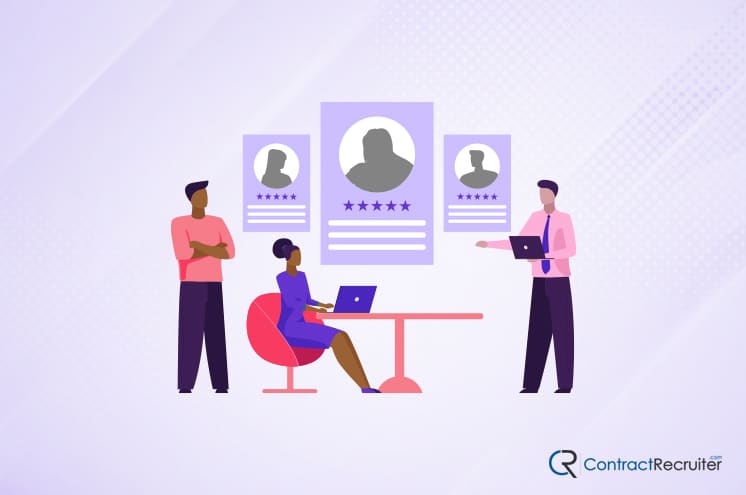In 2020, many of the biggest companies in the U.S. announced initiatives to promote diversity and inclusion. There are many different strategies that organizations can use to increase diversity in the workplace, one of which is implementing blind recruitment in the hiring process.
The idea behind blind recruitment is that hiring teams, even if they are unaware of it, might hold unconscious biases that could impact which candidates they choose to move forward to the next round of the hiring process.
By anonymizing candidates’ resumes and applications, recruiters can focus solely on the skills and experience of those who have applied for a position.
So how exactly does anonymous hiring work? What are the benefits and the drawbacks of this method? Let’s take a look at everything you need to know about blind recruitment.
What Is Blind Recruitment?
Blind recruitment is a recruitment method you can use to remove any identification details from the applications and resumes of candidates. This process allows your hiring team to evaluate potential candidates solely based on their experience and skills. The point of blind recruitment is to avoid an outcome where other factors are taken into account that can lead to biased decisions.
With blind recruitment, many common identification details are often left out to avoid unfair hiring practices. These include:
- Gender: By leaving out the gender of a candidate, blind recruitment ensures that hiring teams aren’t choosing a candidate based on factors such as a preference for working with people of their own gender or other matters of personal bias.
- Ethnic background: Ethnicity isn’t usually shared on an application or resume, but that doesn’t mean there aren’t clues that can be used to determine a candidate’s identity. Things like a LinkedIn profile picture, for example, could potentially lead hiring teams to make a biased decision.
- Names: Some studies have found it’s easier to get hired if you have an easy-to-pronounce, common name. For this reason, blind recruitment can remove the names of candidates. In some instances, a name might also point toward the candidate’s ethnic background or gender as well.
- Age: You can’t entirely avoid getting a sense of how old a candidate is because their years of experience will point towards how long their career has been. However, removing information like the year someone graduated from college or the precise years they worked for a specific corporation can avoid biased decisions based on age.
- Education: In some blind recruitment processes, the particular colleges and universities that an individual attended are also blacked out on their resume and application. The idea here is that avoiding knowing the specific educational details of a candidate can ensure that biased decisions aren’t being made based on the way a school’s academic reputation can lead to speculation regarding their work ethic, intelligence, or abilities.
- Personal interests: Sometimes, candidates will include information about their interests or hobbies on their resume to give hiring teams a better sense of who they are. However, this can interfere with the ability to make a decision purely based on skills and experience. Hiring teams might identify with candidates with similar interests or equate certain hobbies with intelligence.
What Is Unconscious Bias?
Unconscious bias, also known as implicit stereotyping or implicit bias, is a concept in social identity theory that has been increasingly incorporated into workplaces worldwide. The idea is that individuals can hold stereotypes in their minds that impact the way they see other people, even if they don’t consciously realize that this is the case. An individual’s learned associations and experience can influence their expectation or opinion of particular qualities and social categories.
This concept was first defined in 1995 by psychologists Anthony Greenwald and Mahzarin Banaji.
The desire to eliminate unconscious bias in the hiring process is one of the primary reasons organizations choose to implement blind recruitment. The notion is that, by removing any of the qualities or identifying factors that could unconsciously impact how a member of a hiring team sees an individual, they are free to make decisions exclusively based on merit.
When your organization is hiring to fill an essential role, it’s easy to focus mainly on your company’s needs. However, an equally crucial part of the process is the candidate experience. You can learn more about some of the best strategies to create a positive candidate experience in this article.
What Does a Blind Resume Look Like?
Also referred to as anonymous resumes or redacted resumes, blind resumes can look quite different based on the standard practices of your blind recruitment process. In addition, the method through which recruiters transform resumes into blind resumes can also vary.
In the most simple form of blind recruitment, recruiters might use image-editing software or pen and paper to manually redact identifying information from a resume. However, this can be time-consuming and creates the potential for a recruiter to view this information before blacking it out.
For this reason, hiring teams are increasingly using software to process resumes and turn them into blind resumes. This type of software goes through each resume and presents all of the candidates’ information in the same standardized format while redacting identifying information.
What Are the Pros and Cons of Blind Recruitment?
One potential solution to the problem of not meeting your diversity quota in the workplace is to implement blind recruitment. However, it’s worth understanding the drawbacks and the advantages before you decide to start removing all personally identifying information from your hiring process.
The Pros of Blind Recruitment
One of the significant advantages of blind recruiting is that it can ensure that your hiring process is based solely upon merit and not any other factors.
While you might not expect your hiring team to incorporate unconscious bias into their candidate selection, several studies have found that blind hiring changes which candidates are hired during the application process.
For example, several symphony orchestras implemented blind recruiting back in the 1970s in an effort to diversify their orchestra. When they held auditions behind a curtain so that the hiring team couldn’t see the musicians, they found that they hired between 25-45% more women than they had in the past.
While blind recruiting can lengthen the screening process in some respects, it can also help to make the hiring process more efficient in others. For example, there is usually a skill assessment or some other kind of pre-employment testing with blind recruitment.
Quite a bit of time can be saved by running these assessments as many organizations rely on algorithms to analyze the results. As you might imagine, this frees up a lot of time for your hiring team to focus their attention elsewhere.
However, one question that often comes up regarding this type of assessment is whether it’s legal to give aptitude tests as part of the hiring process. To learn more about the legality of different types of pre-employment testing, check out this article.
The Cons of Blind Recruitment
There are some disadvantages to blind recruitment that are worth understanding before implementing this hiring process at your organization.
One of the most apparent issues is that you can only hide a candidate’s personal information during the initial stages of the process. The hiring team will eventually meet the candidate either in person or through a video call, introducing personal information into the equation.
While you can end up with a more diverse pool of candidates through blind hiring, you might find that biases still play a role in the outcome once individuals have made it through to the final stages of selection.
It is also impossible to hide all identifying details about candidates completely. For example, a person with decades of experience in your field will, obviously, not be fresh out of college. Similarly, men typically tend to use more technical phrases in resumes and highlight individual skills, while women more commonly discuss working cooperatively with a team and their broader achievements in their careers.
Of course, these generalizations will not apply in every instance. However, recruiters can still be impacted by their inkling regarding the personal details of a candidate based on the information that does get through the blind recruitment process.
Another concern about blind recruitment is that it can disrupt your organization in its attempt to reach its diversity goals. Since you won’t know any of the identifying details of the candidates, it’s possible you won’t get the results you were aiming for through blind recruitment.
Anonymous hiring can also extend the application screening process, which can be problematic when you are working to have the most efficient hiring process possible.
Finally, another criticism of this recruiting style is that it doesn’t allow for a candidate’s personality to be communicated during the initial stages of the hiring process. In some instances, the style of a candidate’s resume and application offers essential information about whether or not they’d be a good fit for the role.
Similarly, blind recruiting won’t allow you to incorporate finding a good fit for your company culture into your hiring process. For some organizations, this might be a problem, while others might think it helps to diversify their team by avoiding the temptation to hire employees that fit within the existing culture.
Blind recruitment alone likely won’t be enough to meet your organization’s goals for creating an inclusive and diverse company and culture. Having a more inclusive workplace can lead to happier employees, a better reputation, and an increase in the diversity of thought in your organization. Check out these eight easy ways to create a more inclusive work culture in your organization.
How Does Anonymous Hiring Work?
So, how exactly does an organization transform its hiring process into one that incorporates blind recruitment?
One of the simplest ways to start utilizing this strategy is to select a team member who isn’t initially involved in the hiring to go through all candidates’ applications and anonymize them. You’ll want to create a standard list of information that they will redact from every candidate to ensure that the same type of personally-identifying information is hidden regardless of the candidate.
On the other hand, you can create a template that the uninvolved team member can use to transfer information about each candidate onto an identical sheet. This template can have a spot where the candidate’s skills, work experience, degree, and other essential information is included without any of their personal information.
If you want to make the process of anonymous hiring as automated as possible, you can utilize many different software tools to have applications anonymized and demographic information removed from resumes.
If you choose to implement blind recruitment, you will likely want to educate your staff about why you’re integrating this system and how you think it will benefit the organization.
What Steps Should You Take to Implement Blind Recruitment?
While you could choose to redact personal information as a part of the hiring process, blind recruitment can be a whole system that you utilize to promote diversity in your company.
Some other steps you might want to take include:
- Writing inclusive job descriptions.
- Avoiding pre-screening through social media.
- Setting standards of which demographic and personal information you will redact.
- Tracking your hiring stats before and after implementing blind recruitment.
- Considering anonymizing the initial interviews.
Every organization is different, and you might find that your company would benefit from a strict blind recruitment process or one that only leaves out the most basic aspects of personally-identifying information.
Do you have any questions about blind recruitment or whether or not it would be an effective strategy in your organization? Was there anything mentioned in today’s article that you would like additional clarification on? Or perhaps do you have any questions regarding recruitment, in general? If you answered yes to any of those, please feel free to share a comment below the article, and we’ll get a conversation started! I always respond to every comment and love to have conversations about every aspect of the recruitment process. I’d be more than happy to assist you however I possibly can!

